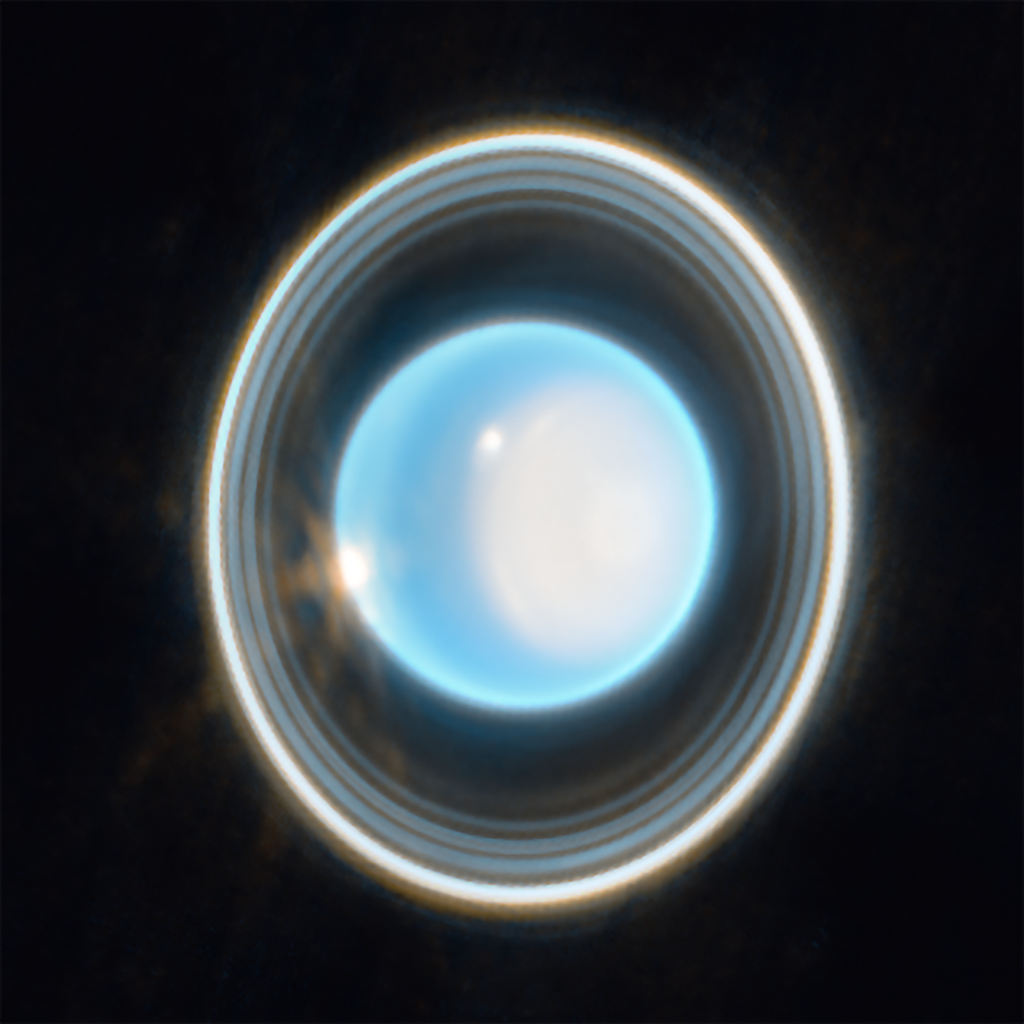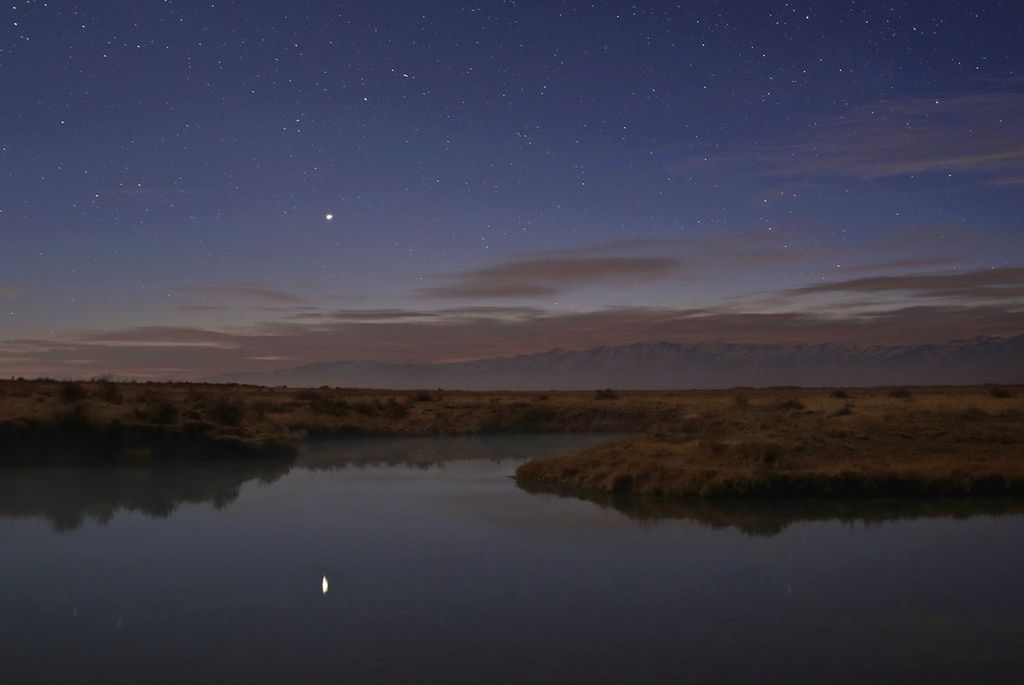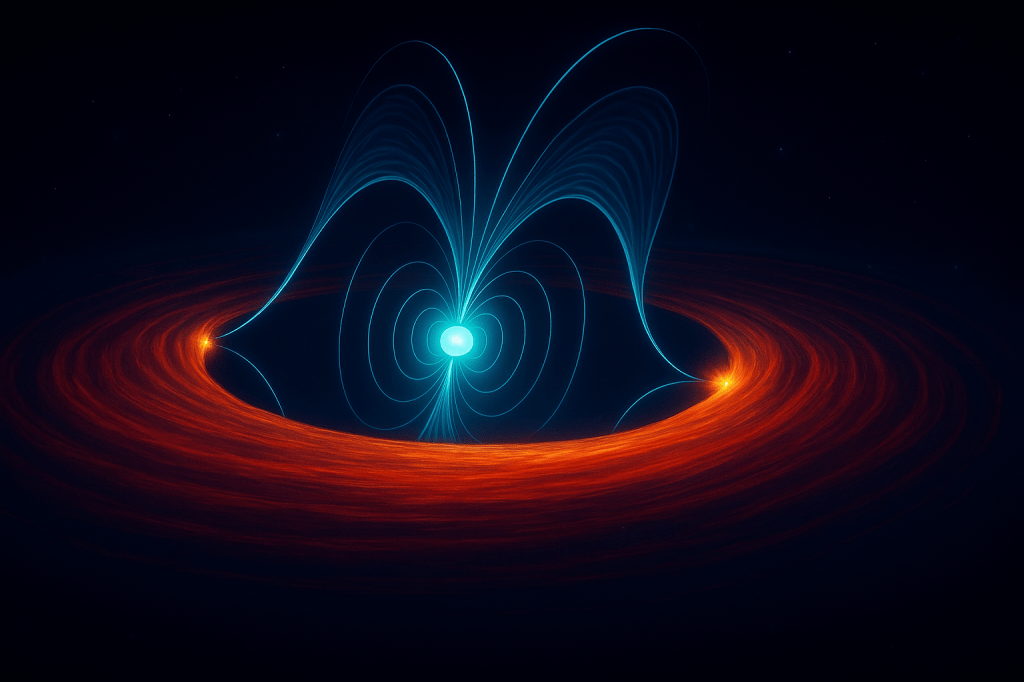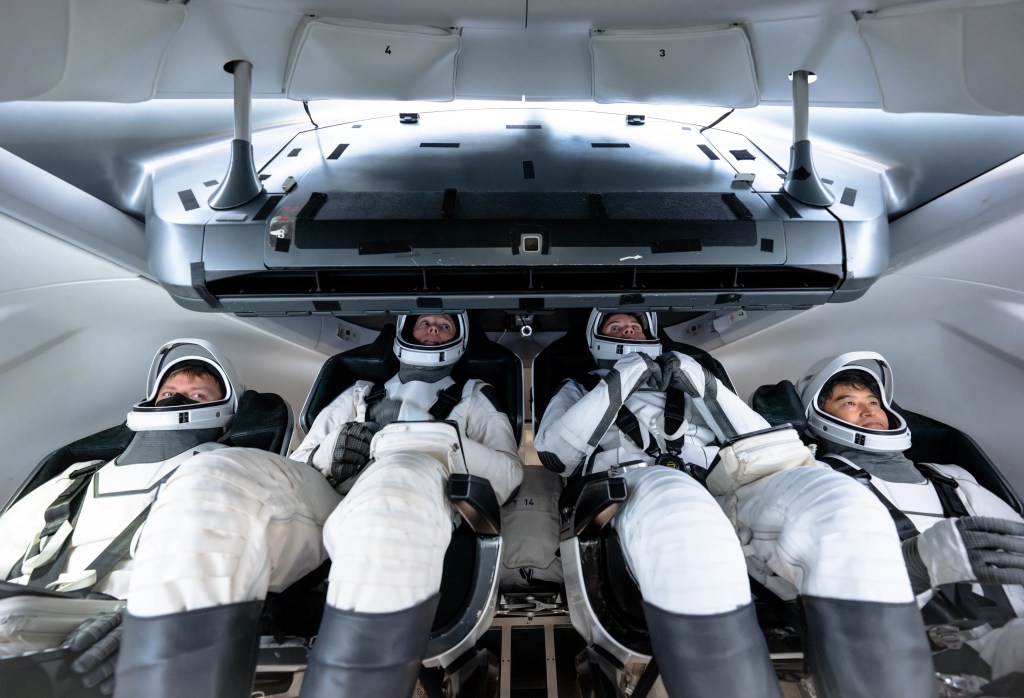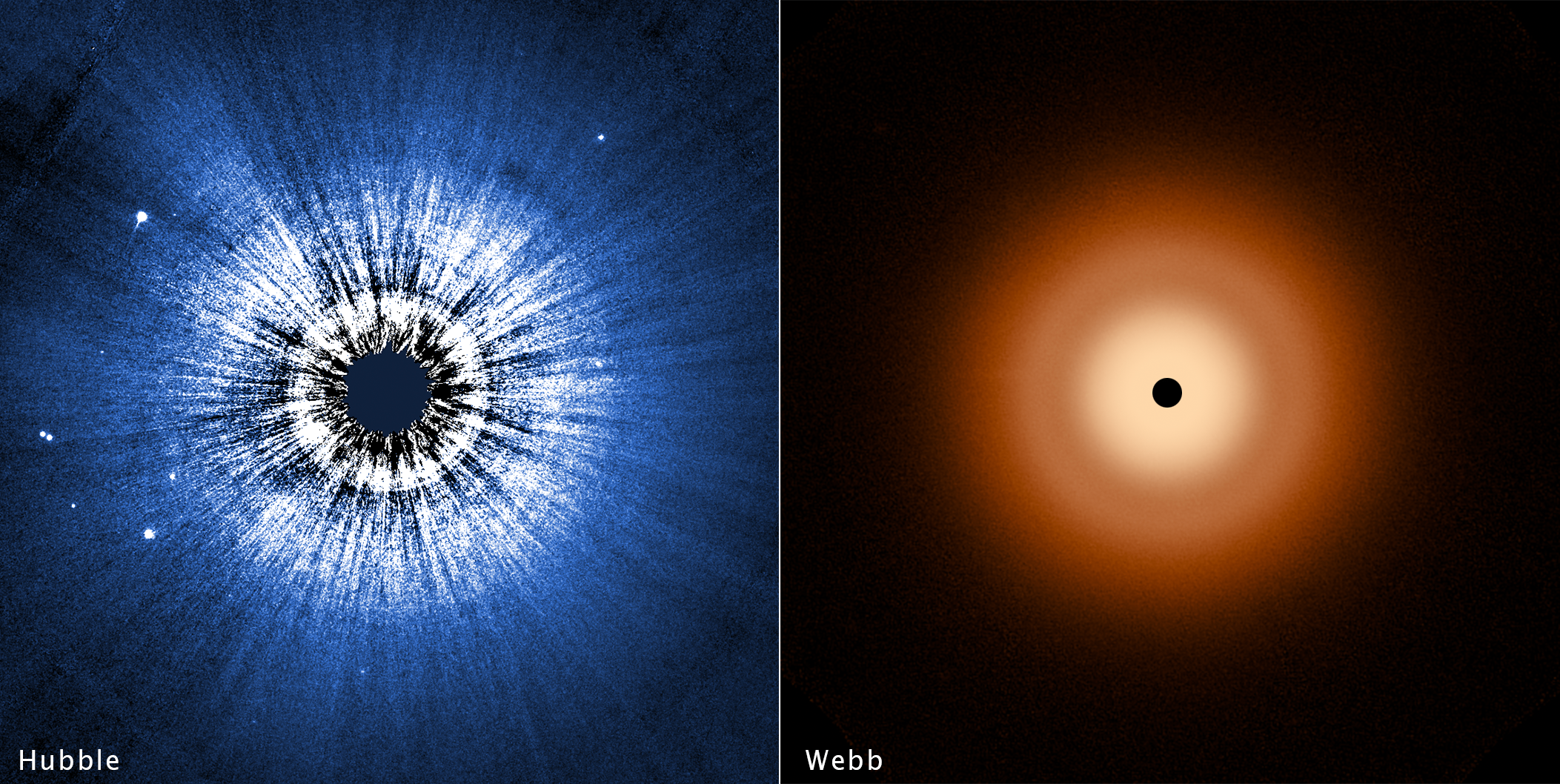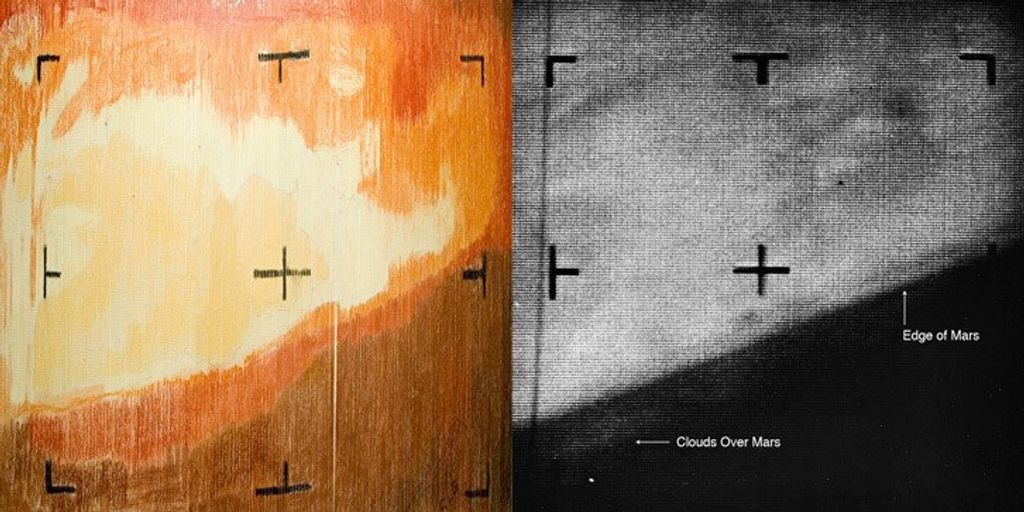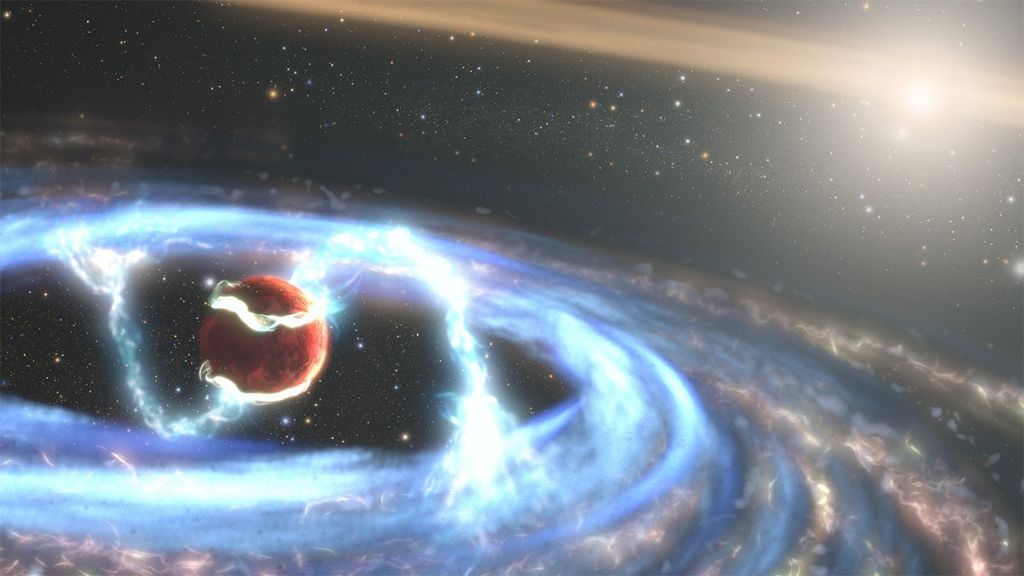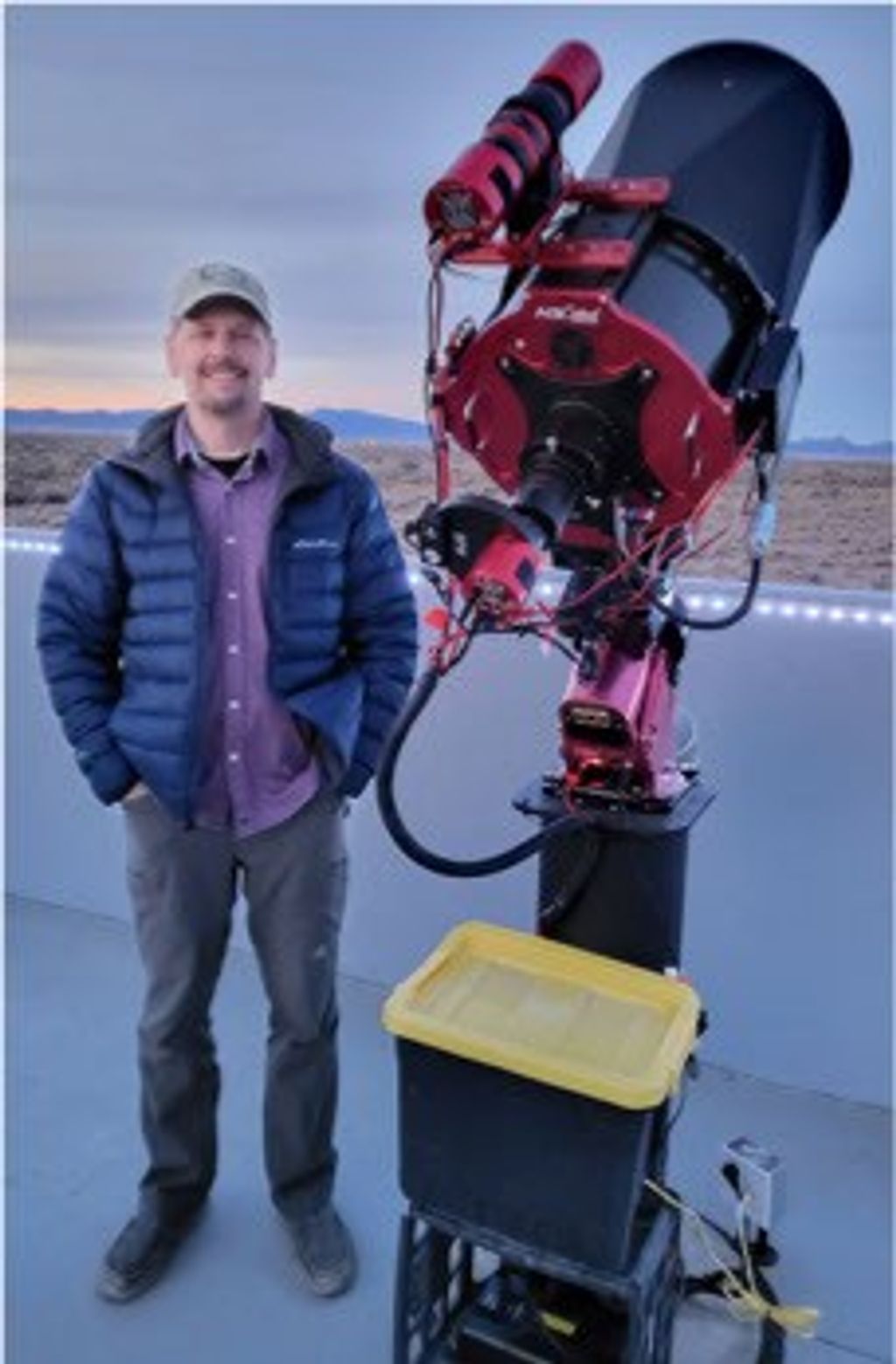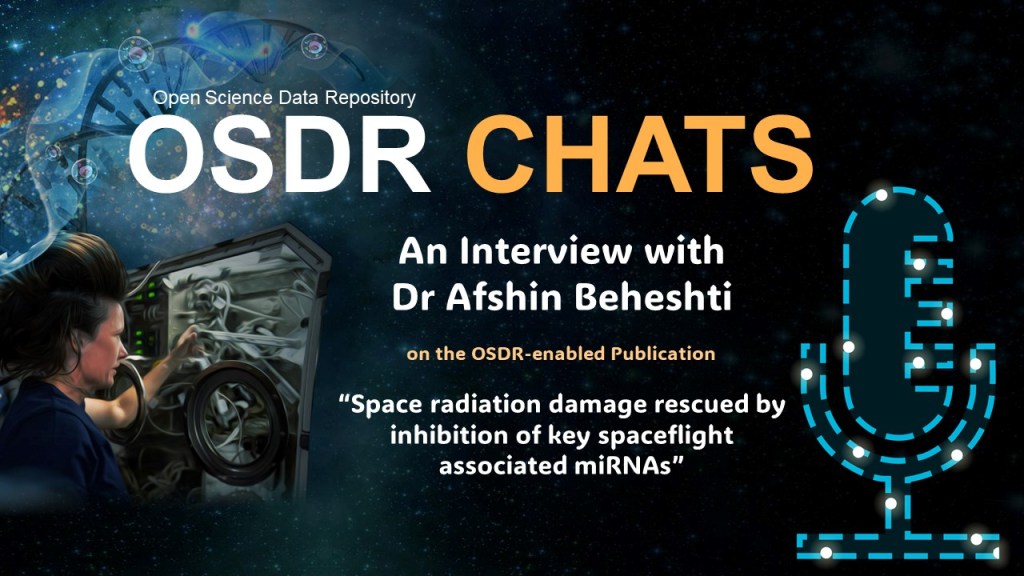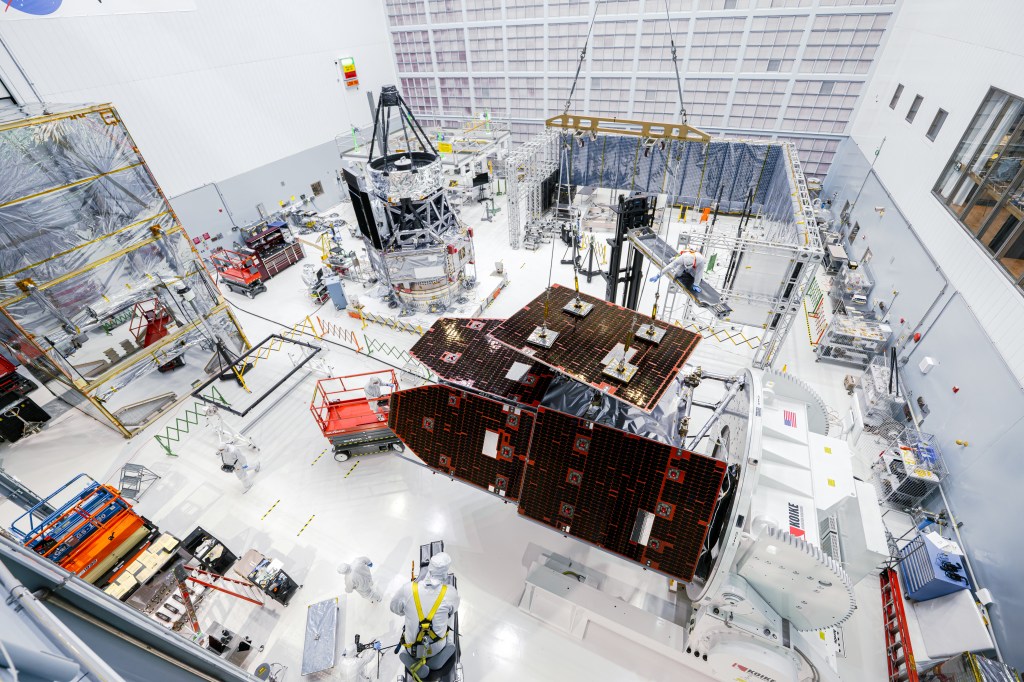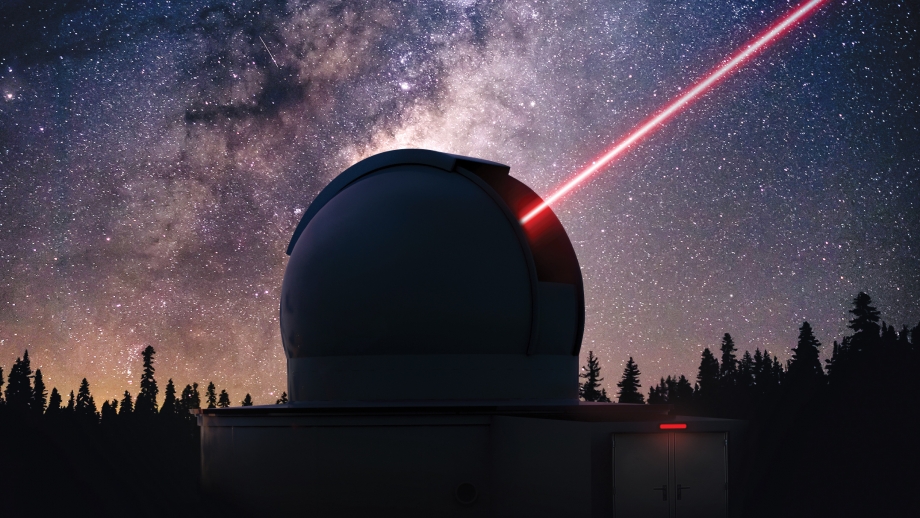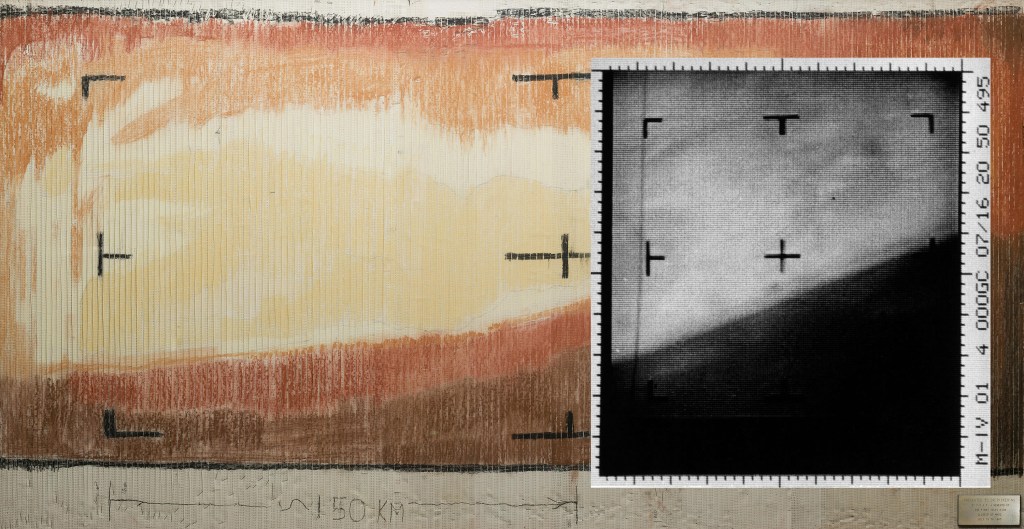1 min read
Planetary Nebula NGC 5189

Planetary nebulae represent the final, brief stage in the life of a medium-sized star like our Sun. While consuming the last of the fuel in its core, the dying star expels a large portion of its outer envelope. This material is then illuminated by the ultraviolet radiation from the stellar remnant, producing glowing clouds of gas that can show complex structure.
A spectacular example of this beautiful complexity is seen in the bluish lobes of NGC 5189. Most of the nebula is knotty and filamentary in its structure. As a result of the mass-loss process, the planetary nebula has been created with two nested structures, tilted with respect to each other, that expand away from the center in different directions. The bright golden ring that twists and tilts through the nebula is made up of a large collection of radial filaments and cometary knots. These are usually formed by the combined action of photo-ionizing radiation and stellar winds.
The nebula is located 1,800 light-years away in the southern constellation Musca. Hubble's image is the most detailed yet made of this object. Its double bipolar or quadrupolar structure could be explained by the presence of a second star orbiting the central star and influencing the pattern of mass ejection during its nebula-producing death throes. The remnant of the central star, having lost much of its mass, now lives its final days as a white dwarf. However, there is no visual candidate for the possible companion.
The name "planetary nebulae" originated with astronomers who studied them through early telescopes with little magnification and optics that were far from sharp. The brightly colored nebulae are often roughly spherical, and many appear green or blue like Uranus and Neptune at lower resolution, so their appearance evoked that of the giant planets in the outer solar system. Many do look somewhat planet-like, but not NGC 5189. This nebula forms a dramatic reverse S-shape.
Planetary nebulae tell us about the possible fate of the Sun, which may form such a nebula when it runs out of fuel in a little over 5 billion years. In 2012, Sze-Ning Chong of Japan's Kagoshima University and collaborators used Hubble data to study the three-dimensional shapes of 20 complex planetary nebulae, including NGC 5189, and determined that a multipolar nebula with at least three pairs of lobes could explain many of the features in NGC 5189.
In 2014, Graziela R. Keller of the University of Sao Paulo in Brazil also used Hubble data to study the characteristics of the light and wind emitted from planetary nebulae, including NGC 5189. She studied the chemical composition of NGC 5189's central star and discovered significantly more nitrogen than previously estimated. The larger amount of nitrogen suggests that the star went through an outburst phase that contributed to the formation of the complex structure seen in the image. The different lobes may each come from a separate outburst in the distant past.
Constellation: Musca
Distance: 1,800 light-years
Instrument: Wide Field Camera 3/UVIS
Image Filters: 502N ([O III]), F657N (H-alpha+[N II]), F673N [S II], F606W (V), F814W (I)
- Object NameObject NameA name or catalog number that astronomers use to identify an astronomical object.NGC 5189
- Release DateDecember 18, 2012
- Credit
Share
Details
Claire Andreoli
NASA’s Goddard Space Flight Center
Greenbelt, Maryland
claire.andreoli@nasa.gov


